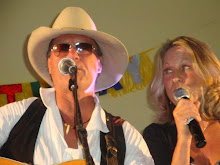66 (D-65) Look at the numbers: 66, 65. Here we are, halfway there, since our starting point, January 1st. Just 65 days before we leave! The countdown continues.
“65 days before we leave, 65 days to go
I write a post and I share it with you....64 days before we leave." (See Post 31 for the melody!)
Deciding on the title of this blog took me a long time. "Preparing for: The Far West (?), The West (?), The American West (?), The Wild West (?), The Old West (?), The Frontier (?), The West Coast." All these terms have been used to refer to this part of the United States. (We'll visit The West Coast when we are in California, of course.)
Americans today will simply say: "We're going OUT WEST for our summer vacation." "We had a great vacation OUT WEST last summer."
Horace Greeley, an American newspaper editor, made famous the words: "Go WEST, young man, go WEST." (See Post 13).
The FRONTIER first meant the land west of the Mississippi River, but the pioneers moved further and further west and consequently the definition of frontier changed. The AMERICAN FRONTIER was generally the most Western part of settlement and typically more free-spirited in nature than the East because of its lack of social and political institutions.
THE AMERICAN OLD WEST (often called THE OLD WEST, THE WILD WEST or THE FAR WEST) comprises the history, geography, people, lore, and cultural expression of life in the Western United States, most often referring to the period of the later half of the 19th century, between the American Civil War and the end of the century. More broadly, the period stretches from the early 19th century to the end of the Mexican Revolution in 1920. As the American Old West passed into history, the myths of the West captured the imagination of Americans... and foreigners too!
So, I finally decided on "THE FAR WEST", thinking of Yves Montand! You know this song, don't you?
Dans les plaines du Far West quand vient la nuit,
Les cowboys, dans leur bivouac, sont réunis.
Près du feu, sous le ciel de l’Arizona,
C’est la fête aux accords d’un harmonica.
Et leurs chants, que répètent les échos,
Syncopés par le rythme d’un banjo.
Dans les plaines du Far West, quand vient la nuit,
Les cowboys, dans leur bivouac, sont réunis.
Dans les plaines du Far West quand vient la nuit,
Les cowboys, dans leur bivouac, sont réunis.
Près du feu, sous le ciel de l’Arizona,
C’est la fête aux accords d’un harmonica.
Et leurs chants, que répètent les échos,
Syncopés par le rythme d’un banjo.
Dans les plaines du Far West, quand vient la nuit,
Les cowboys, dans leur bivouac, sont endormis.
http://www.wat.tv/video/yves-montand-dans-plaines-2srk7_2fgqp_.html (Sorry, the subtitles are in....Italian, and not these original lyrics, but I think that many of you can understand!)
And a short American one....
http://www.youtube.com/watch#!v=CsthalRYm9E&feature=related
Jane
**To see the map better, go to: http://fr.wikipedia.org/wiki/Fichier:U.S._Territorial_Acquisitions.png
__________________________
VOCABULARY:
lack : "manque"
comprises = "comprend"
lyrics = "les paroles d'une chanson"
 Furnace Creek to the railhead near Mojave, a tiring 165-mile (266 km), ten-day trip across primitive roads. Although the teams ran for only six years--1883 to 1889--they have made an enduring impression of the Old West. This is primarily due to a successful advertising campaign promoting 20-Mule-Team Borax Soap and the long-running Death Valley Days radio and television program!
Furnace Creek to the railhead near Mojave, a tiring 165-mile (266 km), ten-day trip across primitive roads. Although the teams ran for only six years--1883 to 1889--they have made an enduring impression of the Old West. This is primarily due to a successful advertising campaign promoting 20-Mule-Team Borax Soap and the long-running Death Valley Days radio and television program!















